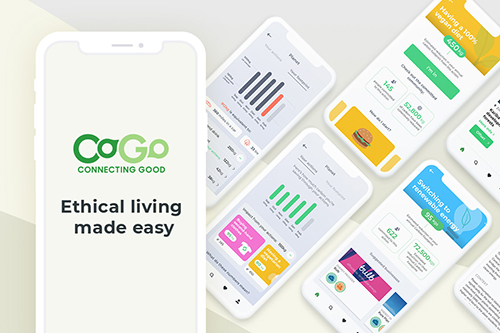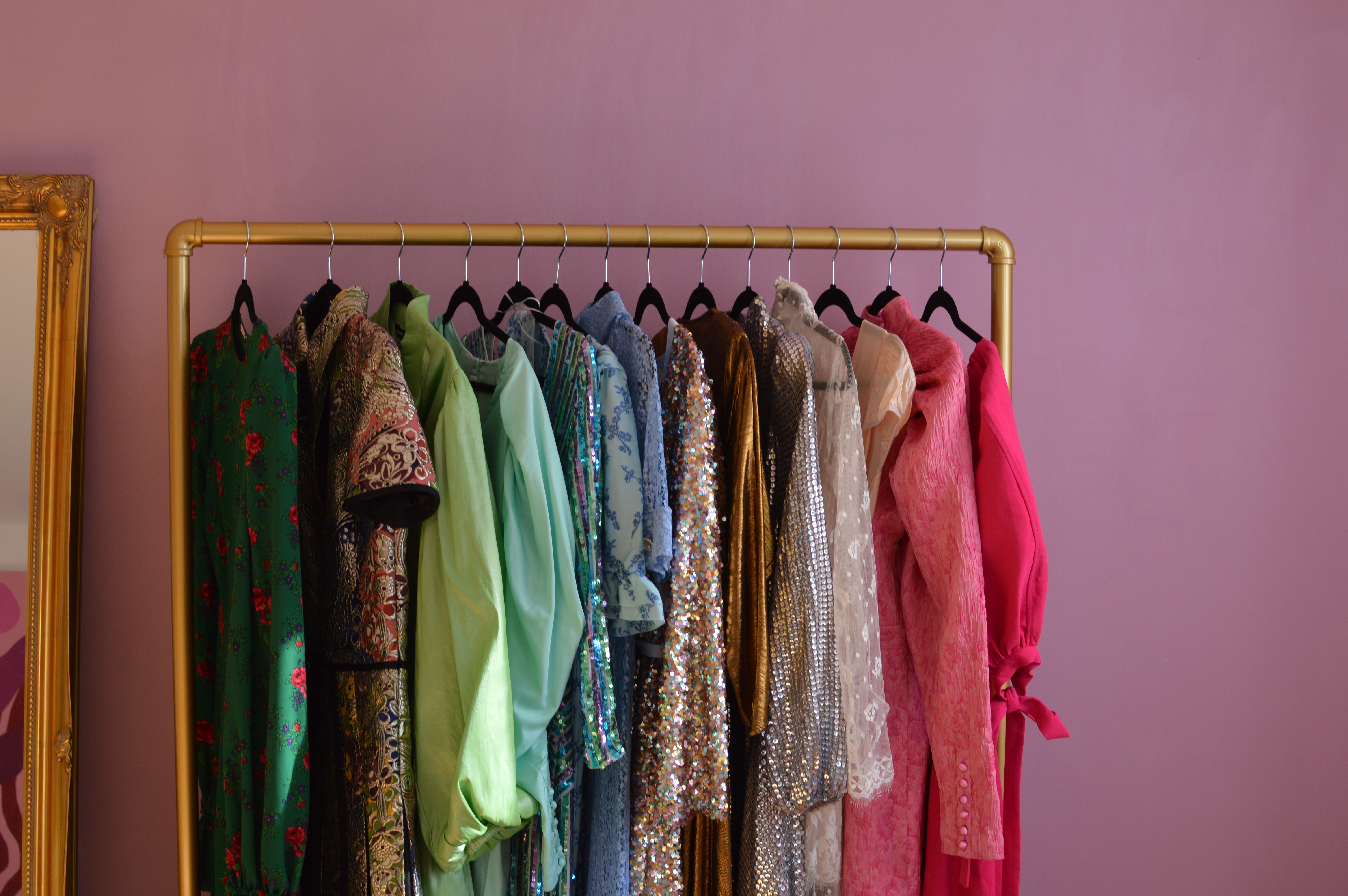Sustainable living: 10 small (but effective) steps to go greener
Easy, everyday actions you can take toward more sustainable living. (Mother Earth will thank you!)


It’s official: there's never been a better time for sustainable living. "Eco-friendly" is no longer a quirky lifestyle trend, it’s a moral imperative. And, as the protest placards are keen to remind us—there is no Planet B.
However, it can be easy to feel overwhelmed by gloomy statistics and give up before you’ve even begun. One of the biggest mistakes we make when it comes to sustainable living is believing our efforts have to be all or nothing, flawless or failure.
The truth is that lots of little habit tweaks and updates can add up to real, lasting change. Even something as simple as shopping more consciously can have major effects, from swapping your usual workout clothes for the best sustainable activewear or your favorite beads and baubles for picks from the best sustainable jewelry brands.
So, start small and keep those resolutions realistic! From your closet to your fridge to your bathroom medicine cabinet, here are ten totally easy steps you can take towards living more sustainably.
Sustainable living: where to start?
1. Go secondhand first
With fashion’s carbon footprint bigger than international flights and shipping combined, modern slavery rife in supply chains, and 13 million items of clothing sent to landfills each week, our shopping habits have never been so in need of a makeover.
But if going cold turkey completely is too big a leap, try adopting the #secondhandfirst rule instead. Before buying anything brand new, ask yourself: “Could I get this secondhand?”
Thrift stores and charity shops aren’t the only options. Resale sites like eBay, Depop, and Vestiaire Collective can all be great places to snag a preowned bargain, often with the tags still on. There are also rental platforms that prove that clothes hire isn’t only for prom night, while swapping and borrowing from friends has the benefit of being ethical and entirely free. You could even do exchanges for eco-friendly Christmas gifts, instead of buying new. Just don’t spill anything!
2. Get a digital guide

Now that seemingly every brand is jumping on the sustainability bandwagon, sorting the good guys from the ones doing greenwashing can be tricky. Thankfully, there are apps for that.
Good On You offers at-a-glance ratings for thousands of fashion brands based on their treatment of the planet, people, and animals. Meanwhile, the CoGo app helps you find nearby businesses that share your values, such as companies that are low-waste, climate-friendly, or living wage employers. You can also connect your bank account to calculate the carbon footprint of your spending, for a daily reminder that "voting with your wallet" really does make a difference.
3. Wash more wisely

Around 25% of the carbon footprint of a garment comes from the way we wash and care for it. Synthetic fibers like polyester shed tiny microplastic particles into the water supply, while over-washing also reduces the lifespan of your clothes—all of which means you have full permission to skip laundry day and employ the sniff test instead.
Treat stains with a spot wash instead of flinging them into the machine after every wear, and banish any lingering aromas by hanging them outside if you can. When you do put a load on (nobody’s suggesting you re-wear your undies, don’t worry), try using a laundry bag like GuppyFriend to reduce shedding and protect your delicates.
4. Ditch the disposables
Cotton may be a natural fiber but it’s a problematic fave, using 20,000 liters of water to grow a single kilogram. (Our bamboo vs cotton guide digs into the issue even further.) This means there’s little excuse for throwing it away on a nightly basis.
So instead of cleaning with disposable wipes and pads, switch to a reusable option like a good old-fashioned flannel or muslin. They're affordable and great for exfoliating, too!
5. Reduce meat and dairy consumption
A 2018 report from Oxford University claimed that giving up meat and dairy is “the single biggest way” to reduce your environmental impact. But if the idea of a halloumi-free future is too much to bear, even reducing your consumption by just 20% could make a significant dent in your carbon footprint—not to mention a few bucks.
So take things one day at a time, literally, with the Meat-Free Monday pledge, or even dip your toe in the veggievore world like your favorite vegan celebrities (Billie Eilish! Beyoncé!) with our vegan for beginners guide.

6. Opt for 'rejected' veg
Speaking of vegetables, more than a third of farmed fruit and vegetables never make it to supermarket shelves because they’re deemed “too ugly”—which, as well as being a concept for a Disney Pixar movie we would 100% cry at, is a massive problem for the planet.
With food waste responsible for six percent of the world’s total greenhouse gas emissions, eating a crooked carrot is the least we can do. They might not be pretty, but that fruit and veg still have a great personality! Check out "ugly produce" options like Misfits Market and Imperfect Foods for your next grocery haul.
7. Look at your energy consumption habits
If, like us, you still hear your parents’ voice in your head telling you to turn off the lights when you leave the room, now is the time to start listening. While household tech is getting cleaner and smarter, there’s still plenty of room to wise up on our own wasteful habits—and save money at the same time.
If you can, switch to an energy supplier that uses renewable electricity from solar, wind, and hydro sources.
8. Bulk buy toilet paper (yes, really)
Instead of buying your toilet paper in small packs from the supermarket, look at bulk-buy delivery options. Bonus points if you can find one that's packaged in plastic-free paper!
9. Opt for shampoo bars instead of bottles

Ever since David Attenborough raised the alarm in Blue Planet II, single-use plastic has become the villain of our shopping baskets. Swerving it isn’t always easy—especially during these hyper-hygienic times—but some simple swaps can help you cut down your consumption.
One easy way to do this ditch shampoo bottles and opt for one of the best shampoo bars. The bonus is you can pack them in your vacation carry-on without worrying about liquid restrictions!

10. Repair, reuse, recycle, reduce
Memorize the four Rs of sustainable behavior, and put them into practice whenever you can:
- Repair anything that is broken or worn out before buying new, either by taking it to an expert (your local dry cleaner will mend and alter clothes for a reasonable price) or finding a YouTube tutorial and doing it yourself (or check out some of our best upcycle ideas, from fashion to home decor).
- Reuse everything you possibly can, from repurposing takeaway containers as Tupperware to using old t-shirts as cleaning rags.
- Recycle properly, even if it means a walk to your nearest collection. The smug points are worth it.
- Finally, reduce your consumption however you can; whether it’s through a no-buy challenge, renting, swapping, borrowing, or simply asking yourself: "do I really need this?"
We can’t shop our way to a healthier planet, but we can make better use of what we already have. Less really is more!
If you want to dig even deeper into sustainable living, check out our handy guides on the differences between sustainable vs ethical, the best sustainable fashion brands on the market, and sustainable gifts you can buy to pass on the planet-bettering love!
Lauren Bravo is a freelance writer and author of two books, What Would The Spice Girls Do? and How To Break Up With Fast Fashion. A shopping addict turned charity shop devotee, she quit fast fashion for good in 2019 and now writes about all the ways we can dress and live more sustainably – without breaking the bank or sacrificing our style.
